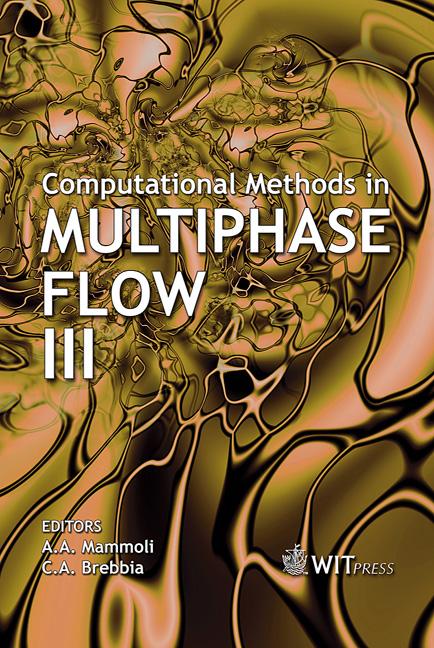Numerical Analysis Of Three-dimensional Two-phase Flow Behavior In A Fuel Assembly
Price
Free (open access)
Transaction
Volume
50
Pages
10
Published
2005
Size
6,047 kb
Paper DOI
10.2495/MPF050171
Copyright
WIT Press
Author(s)
K. Takase, H. Yoshida, Y. Ose & H. Akimoto
Abstract
In order to predict the water-vapor two-phase flow dynamics in a fuel assembly of an advanced light-water reactor, large-scale three-dimensional numerical simulations were carried out. Conventional analysis methods such as subchannel codes and system analysis codes need composition equations based on the experimental data. Because there are no experimental data regarding the thermalhydraulics in the tight-lattice core, it is difficult to obtain high prediction accuracy on the thermal design of the advanced light-water reactor core. Therefore, a new two-phase flow simulation method has been proposed. The axial velocity distribution in a fuel assembly changed sharply around a spacer. The bridge formation occurred at the position of adjacent fuel rods where an interval is narrow, and the vapor positively flows the triangular region where the interval of adjacent fuel rods is large. From the present results, the high prospect was acquired of the possibility of establishment of a new thermal design method for the advanced light-water reactor cores by the large-scale simulation only. Keywords: fluid dynamics, large-scale simulation, two-phase flow, fuel assembly, nuclear reactors, thermal design, three-dimensional analysis. 1 Introduction Subchannel codes [1–3] and system analysis codes [4, 5] are used for the thermal-hydraulic analysis of fuel assemblies in nuclear reactors; from the former, however, many composition equations and empirical correlations based on experimental results are needed to predict the water-vapor two-phase flow behavior. When there are no experimental data such as for an advanced light-
Keywords
fluid dynamics, large-scale simulation, two-phase flow, fuel assembly, nuclear reactors, thermal design, three-dimensional analysis.





